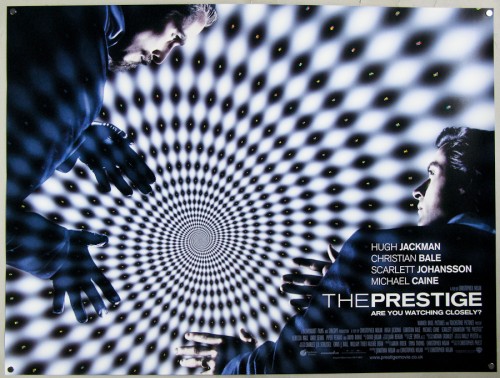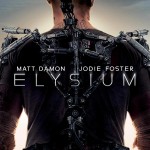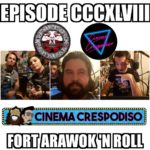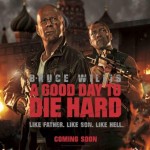The James Tait Black Memorial Prize winning and World Fantasy Award winning novel “The Prestige” is a fascinating story of a pair of turn-of-the-century magicians who develop an intense personal and professional rivalry, sabotaging each other’s performances and lives until tragedy costs them both in ways neither could imagine. Written as a pair of journals (one by each magician) and framed by a modern-day story involving the magicians descendants, The Prestige has its own set of literary illusions and tricks that seek to hide it’s admittedly dull secrets in plain sight.
Brilliantly written and employed, these tricks of the written word would simply not work cinematically. Only so much drama can be derived from scenes of fellas sitting around reading each other’s diaries. Such is the perils of literary adaptation, as things that work on the page and in the theater of the mind would not work on the most silver of screens.
Enter writer Jonathan Nolan and writer-director Christopher Nolan; with mind-twisting “Memento” and crowd pleasing “Batman Begins” under their belts, they set out to make something that could occupy the seemingly empty space between original, unique material and big-budget blockbusters meant for the masses. And to do that, they decided that a big screen version of “The Prestige” was the way to go. And the way they handled this adaptation is quite amazing.
There are basically three ways to adapt a piece of art (such as, say, I don’t know, a book):
- Incredible Fidelity to the Source Material. This is when the film makers take a work and largely adhere to the plot and characters without daring to stray too much. Minor plot and character changes are always made, but in the end they are trying to stay extremely faithful to original artist’s work, for better or for worse (see: The Road,Watchmen).
- Source Material? Who cares about that? Sometimes film makers will have a property to adapt and they just go ahead and throw it all out the window, using it as a springboard to a completely different story. There are times when the original artistic intent is still there and there are times when it has been completely changed (see: Blade Runner,There Will Be Blood, Where the Wild Things Are)
- Give it a makeover. For any number of reasons, film makers could significantly change a large portion of the source while retaining the original artist’s intentions, and sometimes even enhance them with their own flourishes. Whole plot threads could be altered or excised, multiple characters could be condensed into one, entire endings could be changed, any number of things can be done to enrage die hard fans of the source, all the while keeping in tact the whole purpose of the original work.
It is this third approach that the Nolans take, as they saw the literary sleight of hand used by author Christopher Priest and realized they had to do a lot of changing to make this story work in movie form. Warning: major spoilers for both book and film follow. “The Prestige” is split up into Alfred Borden’s journal and Rupert Angier’s journal (the Nolans saw fit to completely dump the modern-day narrative framing device, which really just exists as a reason for a character to read both journals). Almost immediately, Borden’s journal makes allusions to his greatest secret, which is the hidden existence of a twin brother. The journal is divided into sections and sometimes reads as if written by two people, but people who refer to each other and themselves as “I.” These brothers share one life, and as such share one diary, never referring to themselves as “we” but as “I” or on occasion “I and I.” It is weird sometimes, but in the end it all makes perfect sense, especially when reading these passages a second time with the knowledge of Borden’s great secret. The Nolans could afford no tricks like this because it just would not work in a movie. What are they gonna do, throw entire passages of the diary up on the screen for the audience to read? So they went ahead and used the journals in a completely different manner by making them a part of the attacks each man inflicted on each other (as well as disguised sources of exposition).
For all his literary trickery, Christopher Priest gives the reader the whole story in chronological order, albeit from only one view point at a time. He starts with Borden’s diary, which starts at childhood and goes through adulthood. That is followed by Angier’s diary, which similarly starts from a young age and goes through his whole life, and in the process their stories overlap and become entwined. The Nolans, however, take these converging story lines and smash them together. It is as if they took the plot, threw it in a sack and shook the whole thing up, so that what came out was a brilliantly non-linear telling of more or less the same story. By picking and choosing what pieces of information to present and in what order, the Nolans manipulate the audience the same way an illusionist would. By using misdirection and cinematic sleight-of-hand, they try to make the audience think that they are seeing one thing when they are seeing something else all together.
The Nolans changed more than just the use of the journals in adapting the book into movie form. Both Borden and Angier had their back stories removed, and we pick up with them early in their careers. This actually tightened up their character arcs a little more, especially since the origin of their relationship is changed as well. The book positions them as rivals immediately with Borden doing something that would put him on Angier’s permanent shit list. The movie has them starting out as professional contemporaries and acting friendly to each other, with an accident driving a wedge between the two of them. This actually makes for a much more dramatic story arc, as they go from friends to enemies.
But despite the changes made by the Nolans, the end of the film has the same impact as the end of the novel (although both end in drastically different spots, separated in time by entire generations), and they ask the same questions about sacrifice, ambition, what it takes to live a full life, and the dangers of the never ending reciprocity of revenge. Of course in novel form, Christopher Priest has much more room to delve into these questions and into the themes at hand. Most noticeably, the effects of Borden’s and Angier’s decisions are shown effecting those around them in a more extensive manner, whereas the Nolans tried to get this in there in as little screen time as possible (Sarah’s suicide in Borden’s shop). Like many directors, these guys know where art and commerce unfortunately meet and realized that they could not really sell a two hour and 45 minute film about turn of the century magicians and their families, so they smartly cut it down to the essence and make their own magic with what they had. They also smartly cast David motherpunchin’ Bowie as rock star scientist Nikola Tesla. “The Prestige” stands as a shining example of how to take a book and properly adapt it into another art form entirely, which is something a lot of people simply take for granted.
Originally published here on May 29, 2010.


 Talking Trailers: ‘Elysium’ looks incredible
Talking Trailers: ‘Elysium’ looks incredible #348 – Fort Arawok ‘N Roll
#348 – Fort Arawok ‘N Roll Review: ‘A Good Day to Die Hard’
Review: ‘A Good Day to Die Hard’ Review: ‘The Hunger Games: Catching Fire’
Review: ‘The Hunger Games: Catching Fire’
Leave a Reply
You must be logged in to post a comment.